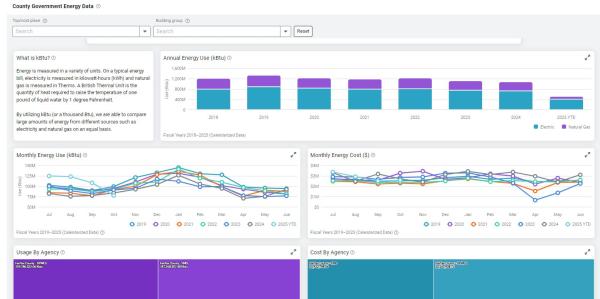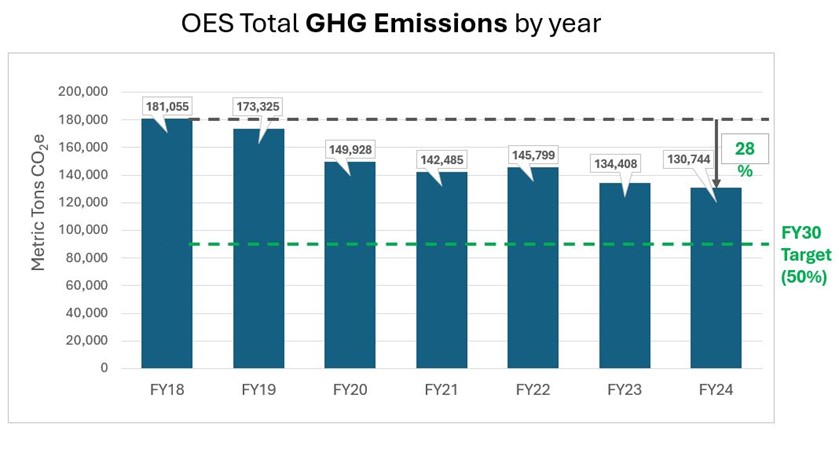
Our efforts to make county operations greener has resulted in nearly $8 million in savings from avoided utility costs in fiscal year 2024.
By making its buildings energy efficient, installing solar panels for clean energy, and electrifying its vehicle fleet, Fairfax County has also cut its greenhouse gas emissions by almost 28% since fiscal year 2018, according to new data from the county’s energy dashboard.
“Reducing our use of fossil fuels for powering our buildings and vehicles not only provides important environmental benefits and improves our energy independence and resilience, it also lowers our utility and fuel costs,” said County Executive Bryan Hill. “As this new data shows, we continue to make steady progress on the environmental goals of the Countywide Strategic Plan and our operational goal of carbon neutrality by 2040.”
Other Highlights from FY24
- Overall greenhouse gas emissions from energy use – including from electricity, natural gas and vehicle fuel – is down nearly 3 percent compared to the prior fiscal year, due to the combination of energy efficiency measures in county operations and a cleaner supply of electricity.
- Overall energy use in county buildings is down nearly 4% from the prior year, and more than 18% since fiscal year 2018, as a result of energy efficiency projects and conservation measures.
- Total electricity use is down over 5% from the prior fiscal year while natural gas emissions decreased by less than 1%.
- The avoided costs from energy reductions at county facilities are estimated to be $8 million in fiscal year 2024. This is the amount of money the county would have spent given the same amount of energy used as in the baseline period of fiscal year 2018. The term ‘avoided costs’ is used because utility rates have increased since the baseline period.

The county energy dashboard includes overall energy use, cost and emissions data for its more than 500 buildings and facilities, including structures like streetlights, wastewater treatment, pumping stations and radio towers. The data is live – it is pulled directly from the county’s energy data management software – and presented in fiscal years, consistent with the climate and energy targets in the Operational Energy Strategy.
Through its energy performance contracting program, the county is analyzing and identifying high-impact energy-saving projects that can save money, lower carbon emissions, and make buildings more comfortable for staff and visitors. Fairfax County’s solar game plan involves installing solar photovoltaic systems on suitable county buildings.
So far in 2024, five buildings were outfitted with rooftop solar panels and two buildings received whole-building energy retrofits. Eight projects in the county’s energy performance program are slated to be completed in 2025. The county has also converted 450 of the vehicles in its fleet to hybrid or all-electric models and is preparing a plan to accelerate this transition and map future needs for EV charging infrastructure throughout the community.
To learn more about the county’s climate action goals, policies and programs, visit the Office of Environmental and Energy Coordination. To track the county’s progress on all of its climate action goals, visit the Climate Action Dashboard.



 SIGN UP FOR DAILY EMAIL HEADLINES
SIGN UP FOR DAILY EMAIL HEADLINES